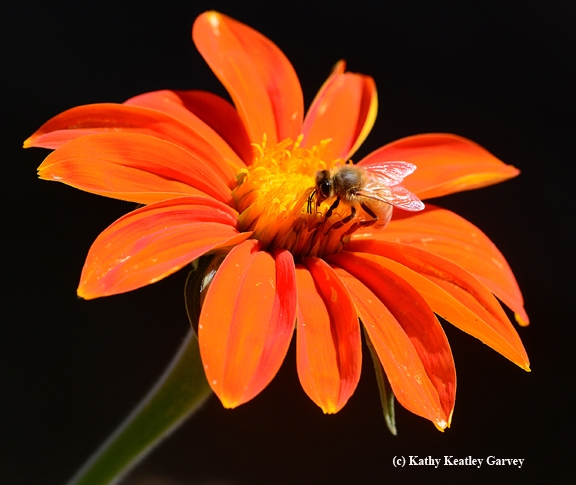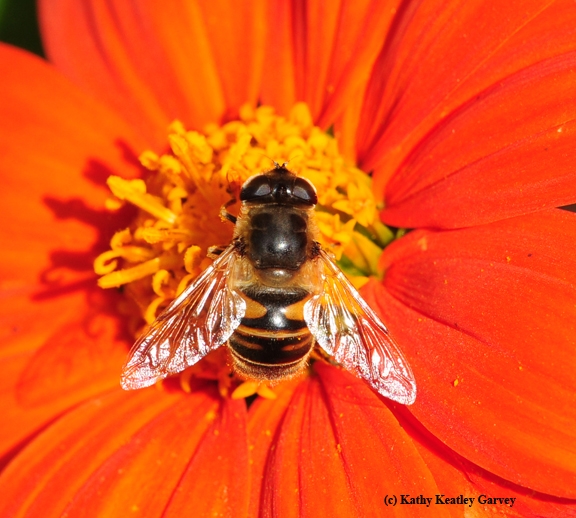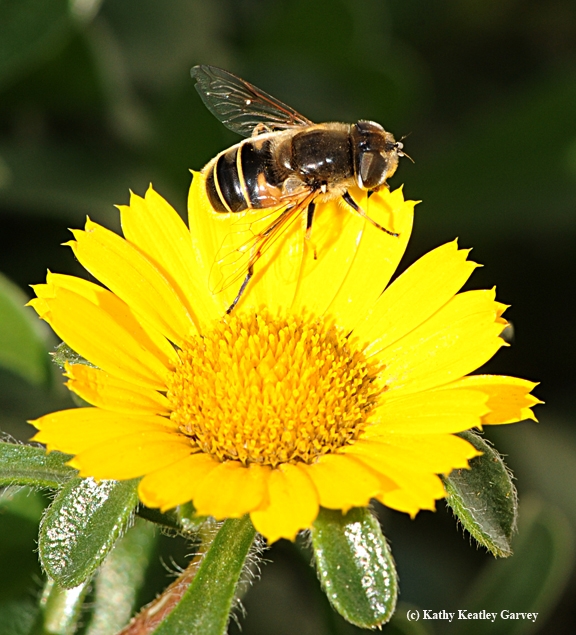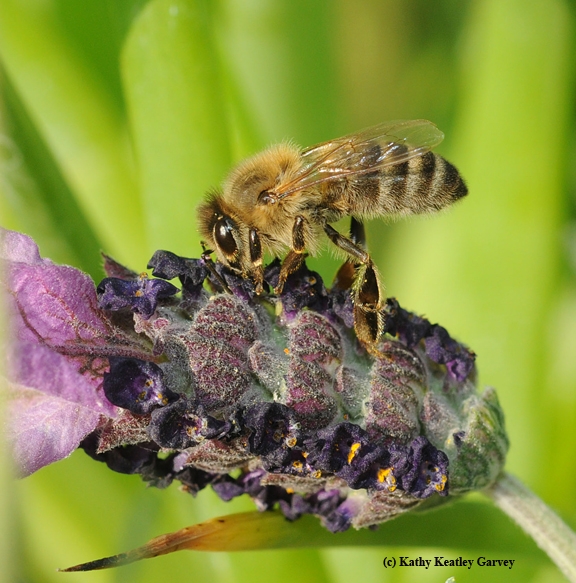
If you've ever wanted to learn how to tell the difference between a honey bee and a drone fly, head over to the Bohart Museum of Entomology, University of California, Davis, during the 102nd annual campuswide UC Davis Picnic Day on Saturday, April 16. The overall theme of Picnic Day is "Cultivating Your Authenticity." The Bohart Museum's theme: "Real Insects and Their Mimics."
The Bohart, located in Room 1124 of the Academic Surge Building on Crocker Lane, is ready for your questions. They'll be open from 10 a.m. to 3 p.m.
The drone fly (Eristalis tenax) or European hover fly, is about the same size as a honey bee (Apis mellifera) and has similar coloring. They both visit flowers and sip nectar. But the drone fly has what appears to be an "H" on its back. The "H" does not stand for honey bee--but don't tell the fly that!
What is a drone fly? In its immature (larva) stage, it's known as a rat-tailed maggot. It lives in drainage ditches, manure piles and puddled, polluted water. The honey bee larva does not live in drainage ditches, manure piles, and puddled, polluted water.
But what a great mimic the adult drone fly is--so great that's it's commonly mistaken for a honey bee. One of the most memorable cases of misidentification occurred on the cover of Bees of the World, by Christopher O'Toole and Anthony Raw. Someone--not them--selected a fly for the cover. Major metropolitan newspapers, nature magazines, stock photo agencies and bee fundraisers have all made the same mistake. Here's a honey bee. Nope, that would "bee" a fly.
A quick way to tell the difference between a honey bee and a drone fly:
Wings:
Honey Bee: Four
Drone Fly: Two
Antennae:
Honey Bee: Elbowed antennae
Drone fly: Short, stubby antennae
Flight:
Honey Bee: Moves pointedly to a flower; it does not hover
Drone Fly: Hovers and moves erratically
Sting:
Honey Bee: Workers (and queens) can sting
Drone Fly: Does not sting. Does not bite.
Bottom line: Don't apply the "Duck Test" to honey bees and drones ("If it looks like a duck, swims like a duck, and quacks like a duck, then it probably is a duck").
"If it looks like a bee, buzzes like a bee, and visits flowers like a bee, well, you know, it may not be a bee; it may be a fly."
Attached Images:



